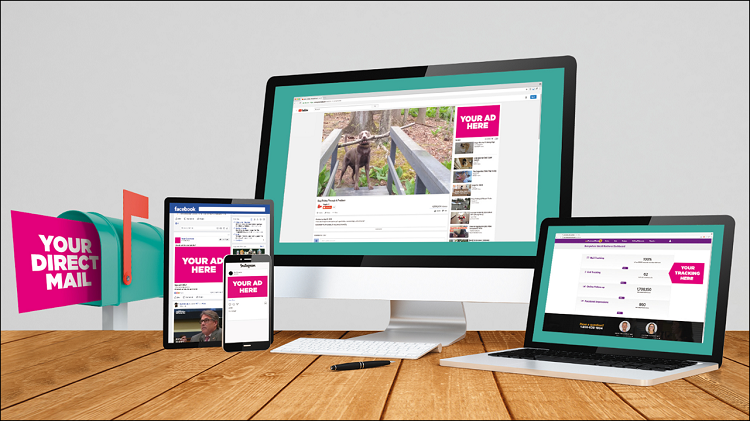
The clamor for consumer attention only gets more complicated and crowded over time. Digital marketing experts now estimate that most Americans are exposed to around 4,000 to 10,000 advertisements each day! These ads are coming from an ever-increasing list of channels: billboards, radio, TV, phone calls, email, direct mail, social media, website banner ads, Google AdWords, text messages, etc.
Probably only 100 or so of these messages will make it through your attention filter on a given day, and then a Microsoft study found the average human attention span is only 8 seconds. It's the reason that having your campaign on multiple channels increases its chances for success. If your campaign only runs on one channel, you have exactly one opportunity to make it through the attention filter, and then only 8 seconds to compel someone to take action. But if you are using an omnichannel approach, you have more chances and more touches to get through and keep that campaign message top of mind.
In fact, research conducted by Gartner has found that campaigns across 4+ channels outperform single or dual-channel campaigns by 300%. A study by Kantar Millward Brown similarly found that integrated campaigns are 31% more effective at building brands. The increase in reach, frequency and consistency by being on multiple platforms at once (just like the customers are) brings real value.
The majority of sales are made after the eighth marketing touchpoint. Assuming your budget doesn't accommodate for the spending needed for billboards and television advertising, here's four suggested channels you can put together for your first effective omnichannel marketing campaign:
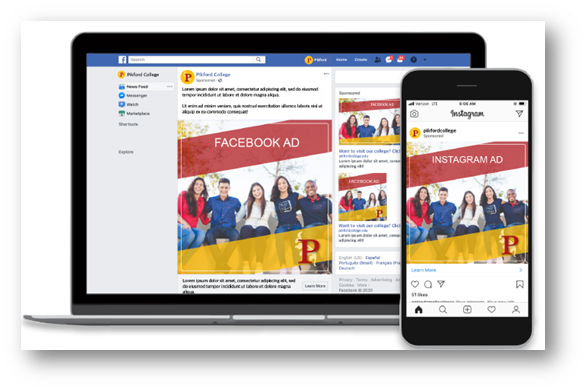
Social Media
Pew Research shows that 72% of the public now uses social media, and of those that use it 75% of them log in every day. Facebook and Instagram are the most popular social media platforms, with some people spending 3-4 hours per day on these two sites alone!
You can take a list of your customers and or prospects and upload it to Facebook to find matches among their users, and then only target your ads to those profiles, making it a more effective use of advertising dollars than just "boosting" a post to a general audience. Plus you can reach people even if they do not "like" your Facebook or Instagram pages.
Social media can be a good place to start to "warm up" your audience before the other channels hit, and continue through the end of the campaign.
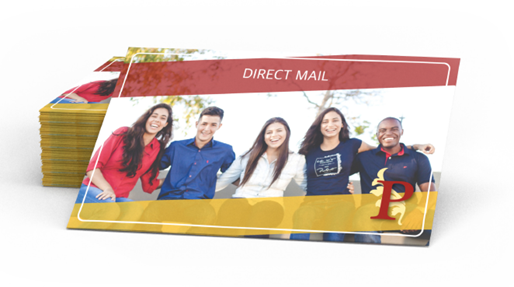
Direct Mail
The average household only gets two pieces of mail each day compared to 157 emails. The majority of consumers check their mail every day and a study by Epsilon found that 77% of consumers sort through their mail as soon as they get it, so if you're looking to get through that attention barrier, the mailbox is a key placement.
A study by the UK Royal Mail found that 92% of people were driven to online or digital activity as a direct result of receiving direct mail. So while your final sales conversions may be happening online, they can be driven there by the use of direct mail.
We've got all the reasons print should be part of your omnichannel campaign in our blog on 7 Ways to Improve Your Omnichannel Campaigns by Adding Print.
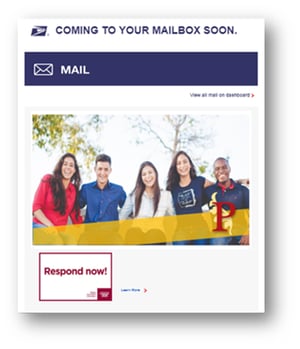 Email
Email
You should be tracking when your direct mail piece is going to arrive in mailboxes and schedule an email to hit around the same time with the same offer. Direct mail and email are the powerhouses of marketing messages as they have the highest response rates at 5% and 1% respectively. A study by HubSpot found that the average mail response increases to 25% if it is combined with email.
Don't have emails for your contact list? Informed Delivery is an email program through the USPS where mail recipients get an email about what is going to come in their mailbox that day. Approximately 29 million people are already signed up with Informed Delivery and sign-ups are increasing by about 1 million people per month. Recipients are highly engaged: 86% of people who are signed up open these emails daily, and they have an average click-through rate of 7-8%! It's an easy way to get in the inbox of people you don't have email addresses for.
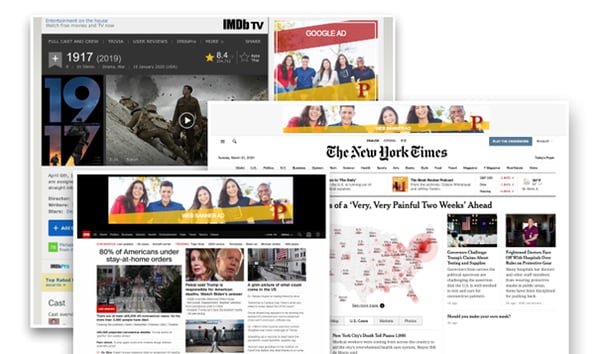
Website Retargeting
Once you've gotten people to your website from the above channels, don't let them go! MIT found that 86% of people who are interested in a product/service will visit the website first before calling or visiting a brick and mortar location. However, Google Analytics shows that 96% of unique website visitors will leave without taking any action!
This is where website retargeting ads come in. These are the ads that follow you around the internet after you have browsed a shopping site. They may be annoying, but they are effective. It's estimated that 26% of customers will return to a site through retargeting, and visitors who are retargeted with display ads are 74% more likely to convert.
You spent the money up front to get these people to at least consider your offer, now the goal is to not let them forget about you. Retargeting ads act as that subtle reminder that says, "Hey, remember you were interested in this?" And their click rates are 10X higher than regular display ads because they have this context of a previous visit.
You want this part of your omnichannel campaign to last at least a month. In one comScore study, retargeted ads led to a 726% lift in website visitation after four weeks of ad exposure.
Does managing four or more channels sound like a lot of work? The truth is, it shouldn't take that much more time to do an omnichannel campaign than it takes to do a single channel campaign. The creative assets and copy should be able to be used across channels for consistency, just changing the sizing to fit each platform's layout and ad specifications. And a partner to help you coordinate all the platforms into a scheduled sequence helps too.
Want to see how an omnichannel campaign could work for you? Join us for a free webinar: "Your Back-To-Business Omnichannel Marketing Campaign". We'll show you how direct mail, Informed Delivery email, social media, and Google website retargeting can all play together for improved conversion rates on your next campaign.


